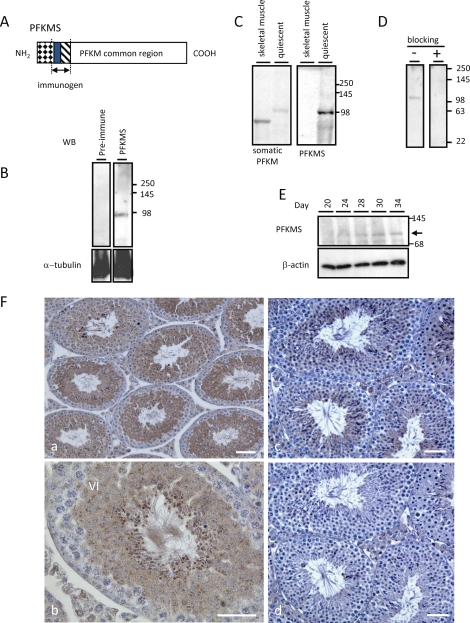FIG. 5.
Western blot analysis and immunohistochemistry using TSR antiserum. A) The region of PFKMS recognized by TSR antiserum is encoded by exons -s3 and -s2. B) A band of approximately 98 kDa was detected in sperm with antiserum but not with preimmune serum. C) PFKMS was detected with antiserum in extracts of quiescent sperm but not in skeletal muscle. However, proteins were detected in both quiescent sperm and skeletal muscle with an antibody recognizing the region common to PFKM and PFKMS. D) Detection of PFKMS in sperm was blocked when antiserum was preabsorbed with recombinant TSR protein but not when it was preabsorbed with preimmune serum. E) PFKMS was detected faintly by antiserum in lysates of Day 20 testis and more clearly in lysates of testes at later stages of neonatal testis development. F) Immunohistochemistry on sections of adult testis. PFKMS was first detected in the cytoplasm of round spermatids (steps 5 and 6) (a and b) and subsequently in the flagellum of elongated spermatids extending into the seminiferous tubule lumen. The immunostaining seen in a section of testis (c) was not seen in a parallel section (d) when antiserum was preabsorbed with recombinant TSR protein. Bar = 25 μm.

